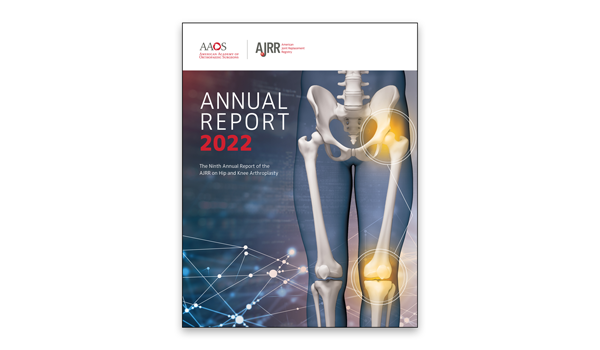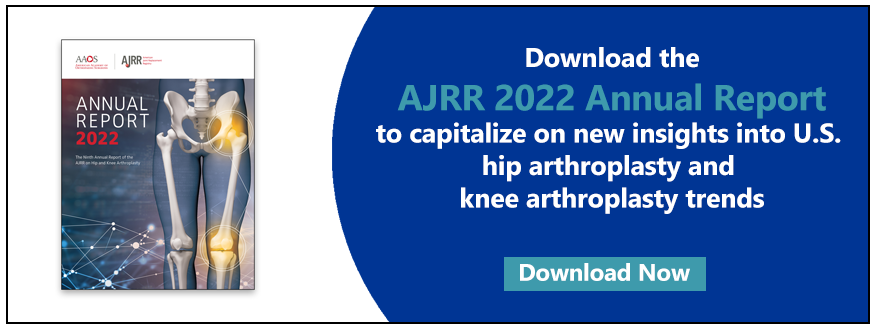
The American Joint Replacement Registry (AJRR), the cornerstone of the American Academy of Orthopaedic Surgeons (AAOS) Registry Program, is proud to present its 2022 Annual Report on hip and knee arthroplasty procedural trends and patient outcomes. The ninth annual report demonstrates an overall cumulative procedural volume growth of 14% compared to the previous year and includes over 2.8 million hip and knee procedures since 2012 from over 1,250 hospitals, ambulatory surgery centers (ASCs), and private practice groups submitting data.
“Data is powerful,” said Bryan D. Springer, MD, FAAOS, chair of the AJRR Steering Committee. “The AJRR Annual Report puts 10 years of procedural data at our fingertips and allows orthopaedic surgeons to develop robust, meaningful analytics that can unlock new insights into patient reported outcomes and support highly informed decision-making and quality improvement.”
Why This Matters
With the collection and reporting of U.S. hip and knee arthroplasty data, the report aims to provide valuable information to orthopaedic surgeons, hospitals, ambulatory surgery centers (ASCs), private practices, device manufacturers, payers and most importantly patients. Its findings can help change practice and improve patient outcomes.
The AJRR is the largest orthopaedic registry by annual procedure count. Some notable highlights in the 2022 Annual Report include:
- Patient-Reported Outcome Measures (PROMs) are increasingly being utilized to evaluate success of a hip or knee arthroplasty procedure. Through continued support of the RegistryInsights® PROM platform and partnerships with third-party vendors, AJRR has experienced substantial growth in PROMs capture. By the end of 2021, over 400 participating sites submitted PROMs, which is a 38% increase compared to the previous year.
- For the first time this year, age-stratified patient reported outcome scores were evaluated. Patients older than 75 years of age were found to have poorer scores compared to younger groups, most notably on the PROMIS-10 quality of life assessment tool.
- ASCs play an increasingly important role in the delivery of total joint arthroplasty care in the U.S. The number of procedures submitted by ASCs has grown exponentially between 2012 and 2020 and has increased by 57% since the AJRR 2021 Annual Report.
- Trends in the utilization of technology in total knee arthroplasty (TKA) and total hip arthroplasty (THA) were a new addition to this report. Utilization of robotics in TKA has increased over six-fold and more than doubled in THA since 2017. Computer navigation use has remained relatively stable.
- Peer-reviewed publications and presentations based on AJRR Registry data continue to be an important focus of AJRR.
"The past decade has been marked by a multitude of successes and growth for AJRR," says James A. Browne, MD, FAAOS, chair of the AJRR Publications Subcommittee and editor of AJRR Publications. “This year’s AJRR Annual Report is testament to the commitment of healthcare institutions, clinicians and patients to improving quality musculoskeletal care. As I look ahead, I am optimistic about the future and our ability to provide clinical insights, national trends and risk-stratified outcome analyses for patients who undergo hip and knee arthroplasty procedures.”
For slides with figures and data tables from the report that can be used in presentations and lectures, click here.
To learn more about AJRR participation and how your site can be included in the next Annual Report, contact the AAOS Registry Engagement team here.



